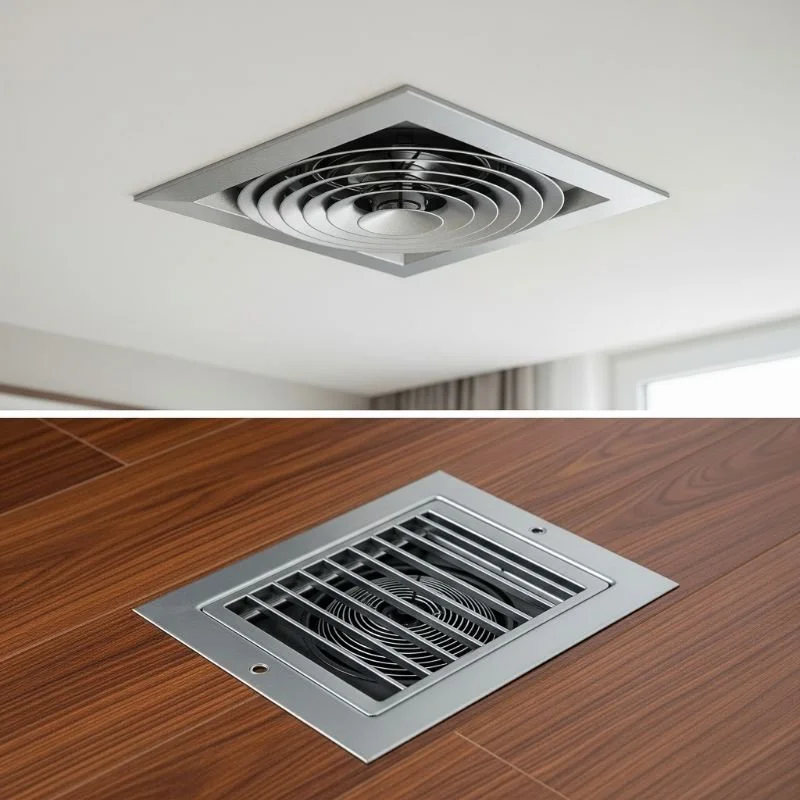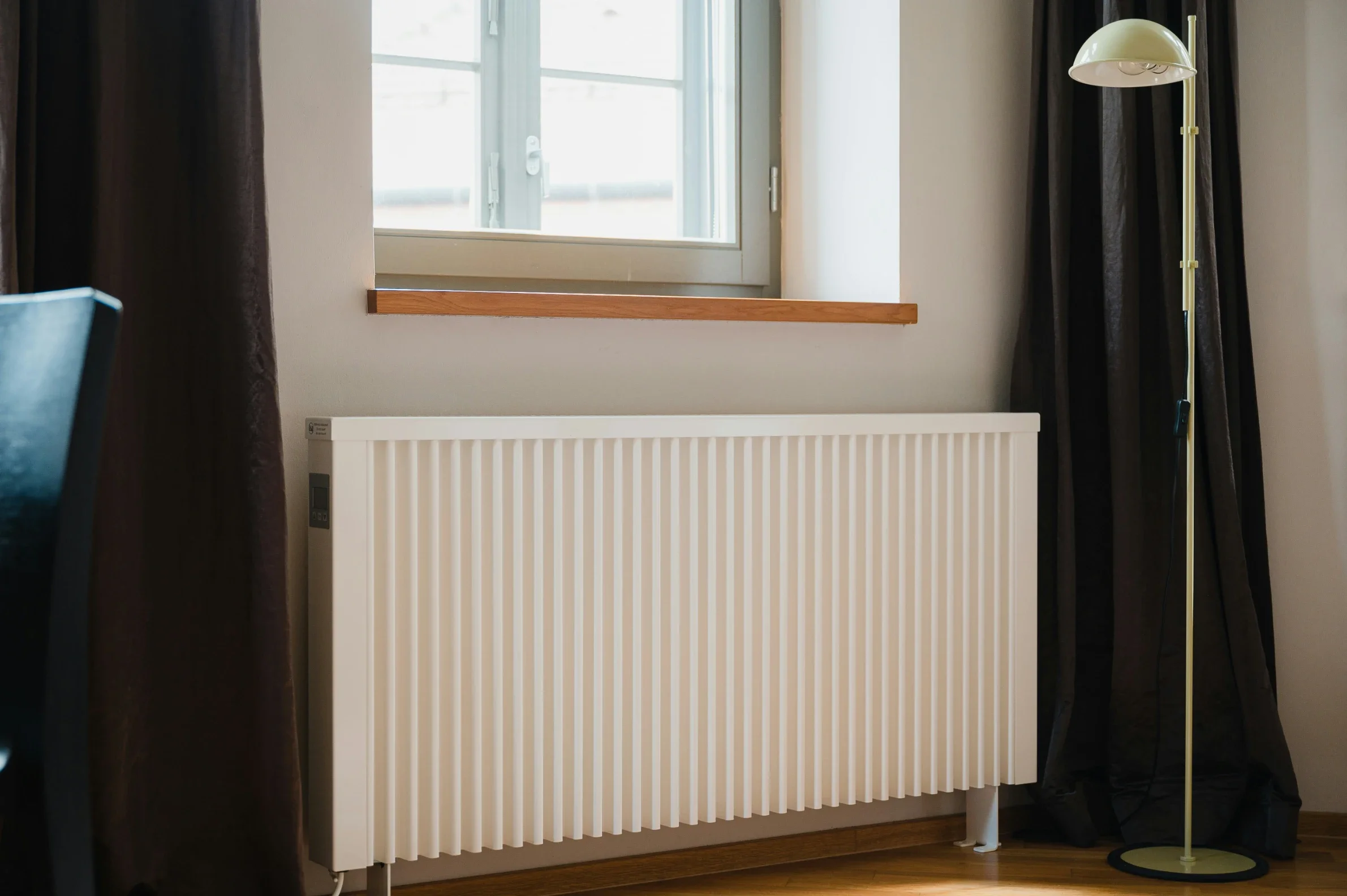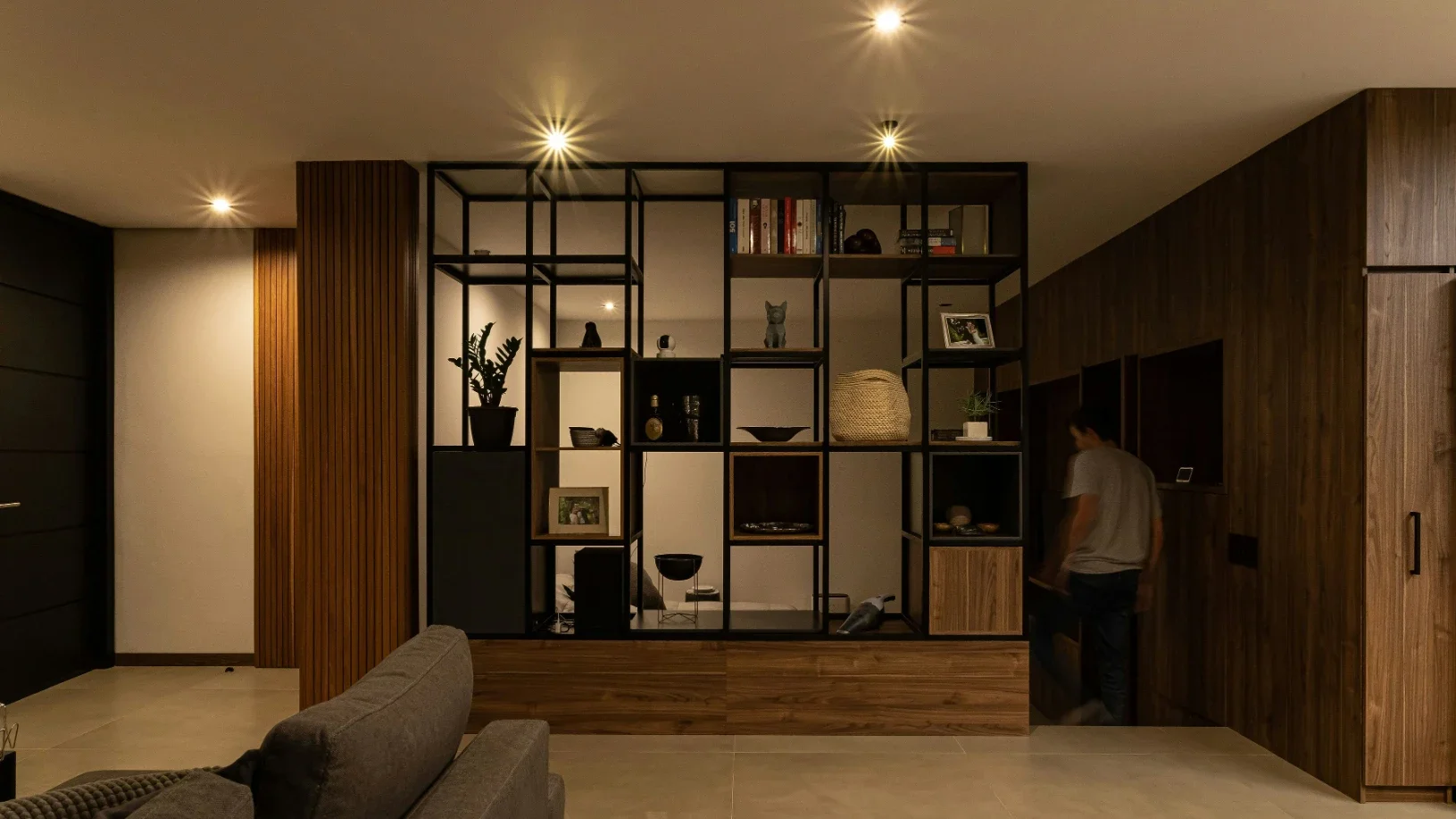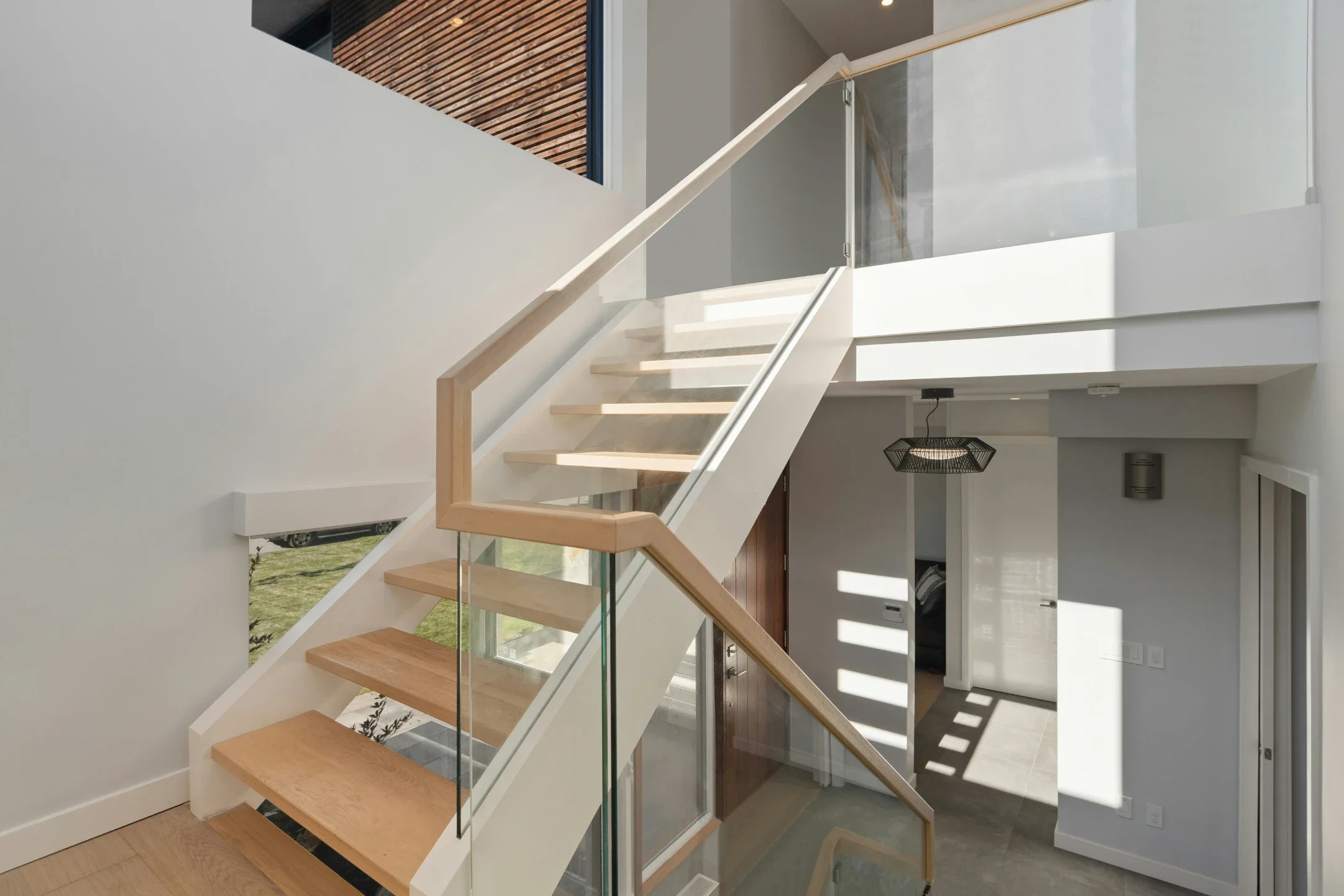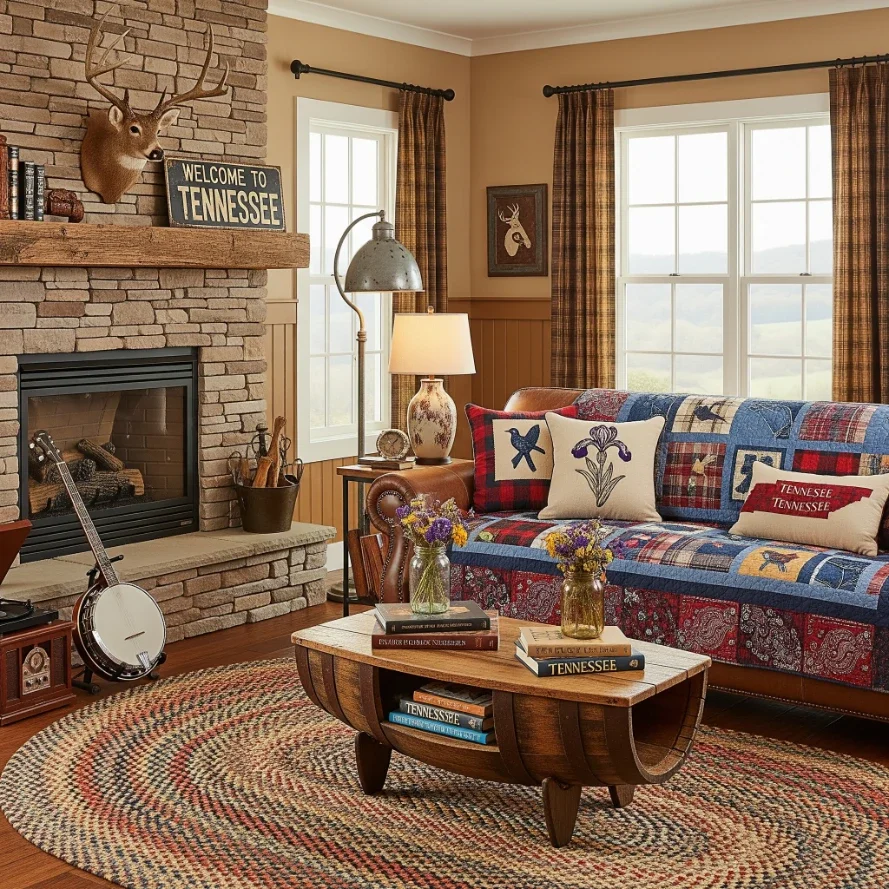Ceiling Vents vs Floor Vents: Which Looks Better in Modern Homes?
Explore the aesthetic and functional differences between ceiling vents and floor vents to find the best fit for your modern home's design and airflow.
Choosing between ceiling vents and floor vents isn’t just about where the air comes from; it’s a design and comfort decision that affects how your home feels, functions, and even looks.
In a world where energy efficiency, interior aesthetics, and smart HVAC choices matter more than ever, understanding how vent placement affects your comfort (and your bills) is key.
Your climate, home layout, and even whether you have kids or pets all play a role. For example, floor vents tend to work best in colder regions where heat rises, while ceiling vents excel in warm climates, helping cool air drop efficiently into your living space.
By the end of this guide, you’ll know exactly which vent setup aligns with your style, comfort needs, and budget so you can stop guessing and start optimizing your home’s airflow.
How Ceiling and Floor Vents Actually Work (and Why It Matters)
Let’s get one thing straight: both ceiling vents and floor vents serve the same core purpose: they distribute heated or cooled air from your HVAC system into your home. But how effectively they do that can vary based on factors like your region’s climate, the layout of your house, and even basic airflow physics.
The key principle here is simple: warm air rises, and cool air sinks. That one rule shapes how and where vents are installed in homes across the country. It's not just about preference; it's about physics and efficiency.
In warmer regions, ceiling vents tend to be the go-to choice. That’s because cool air naturally sinks, so when it’s pushed from the ceiling, it falls and spreads evenly across the room. This setup not only helps cool the space faster but also keeps vents up and out of the way, which can be a design advantage in modern or minimalist homes. It’s also ideal when your HVAC system is located in the attic, as it allows for a more straightforward ducting layout.
However, ceiling vents aren't always the best solution, especially in homes where heating plays a more prominent role. In cooler climates, floor vents are often more effective. When warm air is released at ground level, it rises naturally and warms the room from the bottom up. That means you’ll feel the warmth sooner, and your system doesn’t have to work as hard to maintain a comfortable temperature.
Floor vents are also easier to service and maintain. But they do come with a few practical challenges. Furniture, rugs, or even everyday clutter can block airflow, which reduces their effectiveness. In some modern homes, floor vents may also feel visually intrusive, especially if you're aiming for a clean, streamlined aesthetic.
Choosing between ceiling and floor vents isn’t about which is better; it’s about which is better for your home. If your primary need is cooling, especially in a hot climate, ceiling vents make a lot of sense. If you’re battling winter temperatures and want fast, efficient heating, floor vents will likely serve you better.
Understanding this difference can help you make informed decisions whether you’re building a new home, renovating, or just wondering if your current setup is the most efficient it could be. In the world of HVAC, vent placement isn’t just a design choice; it’s a comfort strategy.
Aesthetic Appeal: Which Vents Look Better in Modern Homes?
In today’s world of curated spaces and Pinterest-worthy interiors, functionality isn’t the only thing on people’s minds. Homeowners want everything from faucets to flooring to furniture to work together in one cohesive look. And yes, even something as overlooked as HVAC vent placement can subtly affect the vibe of your space.
Take ceiling vents, for example. These are the silent heroes of modern design. If you’re chasing that sleek, minimalist aesthetic, ceiling vents practically disappear into the background. They maintain smooth lines across open-concept layouts and never interrupt your flooring flow or force you to rearrange furniture around them.
When paired with paint-matched vent covers, they become nearly invisible, letting the rest of your design do the talking. For modern homes, especially those with high ceilings and a light, airy feel, ceiling vents simply make sense. They’re unobtrusive, clean, and blend in effortlessly.
On the other hand, floor vents bring a different kind of charm. They’re classic. Cozy. Familiar. They fit beautifully into homes with rich hardwood floors, traditional trim, and a warm, inviting vibe. But they do require a little more planning. Floor vents can interfere with the placement of rugs, sofas, or curtains, especially in tighter spaces. And in ultra-modern homes, they can sometimes feel out of place or even clunky unless you’re intentional about how they’re styled.
Luckily, vent design has come a long way. Today, there are high-end options made from materials like cast iron, hardwood, or brushed brass that add a designer touch rather than detract from your space. Whether you’re going for rustic farmhouse, transitional, or luxury traditional, you can find a vent cover that complements the look rather than competes with it.
Ultimately, your vent choice should align with your overall design goal. Ceiling vents usually win in minimalist and modern spaces, while floor vents still shine in more classic, layered designs. If you have pets or kids, placement becomes even more important both for safety and efficiency, so it’s worth considering how your HVAC setup fits into your day-to-day lifestyle.
At first glance, your vents might not seem like a big deal. But when everything else is on point, mismatched or awkward vent placement can throw off the whole aesthetic. And in home design, the details are where the magic happens.
Installation & Maintenance: What You Should Know Before Committing
It’s easy to get caught up in how your vents look or where the airflow comes from, but let’s be honest, that’s only half the story. The real challenge often shows up behind the walls and under the floors. Installation complexity and long-term maintenance can make or break your HVAC experience and sometimes your budget if you’re not prepared.
Let’s start with floor vents. They’re generally considered the easier option when it comes to installation. In homes with crawlspaces or basements, ductwork can be run underneath without much hassle. This makes the setup relatively simple and often more affordable, especially in older homes that were already designed with this type of system in mind. Maintenance is also pretty straightforward; just lift the cover and you’ve got quick access for cleaning or servicing.
However, floor vents aren’t perfect. Because they sit low and are fully exposed, they tend to attract everything from dust to pet hair to stray crumbs. If you have kids or animals, you’ll probably find yourself vacuuming around them a lot more often than you’d like. Plus, furniture placement becomes a little trickier. You’ll need to design your room around the vents or risk blocking airflow, which isn’t ideal for comfort or energy efficiency.
Now, ceiling vents are a different beast altogether. They bring a lot of aesthetic appeal, especially in newer builds or homes that lean into sleek, minimalist design. Because they’re tucked out of sight, they’re safe from curious pets, playful toddlers, or accidental spills. From a cooling perspective, ceiling vents also help circulate air more evenly, especially in homes with high ceilings or open layouts.
But here’s the catch: ceiling vent installations typically require an attic-based HVAC system, along with proper insulation to avoid energy loss. That means more complex duct routing and potentially higher labor costs. And when it’s time for maintenance? You may need a ladder, a technician, and a bit more patience to get the job done, definitely not as simple as popping off a floor grille.
Energy Efficiency & Cost: Which Vents Save You More?
Let’s talk about savings because that cool breeze or cozy warmth feels a lot better when your energy bill isn’t sky-high. Your choice between ceiling vents and floor vents can have a bigger impact on HVAC efficiency (and your wallet) than you think.
Ceiling Vents: Cooling Pros, Heating Cons
In hot climates, ceiling vents shine. They release cool air from above, allowing it to fall naturally, which means less effort from your air conditioning system.
But when it comes to heating, they’re not as efficient. Hot air rises, so blowing warm air from the ceiling means your system works harder to keep you toasty.
Floor Vents: Heat-Saving Champs
Floor vents are a win for homes in colder areas. They pump out warm air at ground level, letting it rise and fill the space efficiently. That means less run-time and more consistent temperatures, aka lower bills.
If you're still weighing your options and want advice tailored to your home's layout and local climate, connecting with an experienced HVAC service company near me is a smart move. They can assess your current setup, recommend the most efficient vent configuration, and potentially help you avoid costly mistakes down the road.
When to Choose Floor Vents vs. Ceiling Vents
Still torn between floor vents and ceiling vents? Don’t worry, it’s not a one-size-fits-all answer. It really depends on your climate, lifestyle, HVAC system setup, and even how you decorate your space.
Here’s a quick breakdown:
Choose Floor Vents If You...
Live in a colder climate.
Prioritize heating efficiency
Have a basement or crawlspace for easy duct routing.
Don’t mind keeping furniture away from vents.
Choose Ceiling Vents If You...
Live in a warmer region.
Want clean, modern aesthetic appeal.
Use an attic HVAC system.
Need vents away from pets or children.
For many homes, a hybrid HVAC layout (yes, a mix of both types!) is actually ideal. Think floor vents for the lower level and ceiling vents upstairs. It’s all about optimizing airflow efficiency and meeting the needs of each room.
Still unsure? An HVAC pro can assess your home’s layout, ductwork, and lifestyle needs to give you the best direction. Whether you lean traditional or love modern minimalism, there’s a vent setup that’ll fit both your comfort and your style goals.
Final Verdict: Function, Flair, and Flow
So, ceiling vents vs floor vents, who wins? The truth is, it depends on what you value most.
Want sleek, modern aesthetics and live in a hot climate? Go ceiling vents.
Prioritize heating efficiency and easy maintenance? Stick with floor vents.
Don’t forget to consider furniture layout, pet safety, and energy efficiency. Still stuck? Talk to a local HVAC specialist to find your home’s perfect airflow solution.
At the end of the day, the best vent is the one that keeps you comfortable and makes your space look amazing.
